- Home
- Larry McMurtry
Oh What a Slaughter Page 3
Oh What a Slaughter Read online
Page 3
The frequent variation in post-massacre body counts is also explainable. Having just participated in the killing of more than one hundred human beings in an irrational spasm of violence, one would not be likely, while the blood of the living is cooling and the blood of the victims still soaking into the ground, to be able to wander through the meat shop and produce an accurate count.
In the Custer battle, incidentally, there was a good deal of decapitation as well as more routine mutilations. Quite a few limbs were also chopped off—it would not be hard, in such a context, for a counter such as Lieutenant James Bradley to overlook a corpse or two.
Massacres may be many things, but they are never neat—they might be considered the very antithesis of neatness. Not everyone died in a nice countable line; in fact, almost no one did. Some fled, some were chased; many were wounded, often mortally. Many of these last died at some distance from the center of the fight. A few might crawl away and live for days before dying. At Wounded Knee four Sioux babies and one or two women were found alive some days after the massacre, although a blizzard had passed through in the meantime. The resilience of babies, particularly, has been noticed in many such contexts.
It could be too that there are basic psychological reasons why body counts vary so greatly. Counting is a rational activity, requiring at least a little brainpower, whereas slaughtering people is a process during which reason is best negated. In indiscriminate killing reason gets pushed aside: the two modes, slaughtering and counting, are opposed. No one was carving notches while the bullets flew at Sand Creek or Wounded Knee.
* * *
Though body counts still meant something in the Vietnam War, most modern military conflicts have spread death on such a vast scale as to render counting irrelevant, and also impossible. In the firebombing of the German cities in World War II the intense heat of the fires left nothing countable, just globules of fat. How many did die in Dresden or Hiroshima? The count can only be approximate, as on a smaller scale, it still is for the victims of 9/11.
The massacres of the American West were intimate affairs compared to the vast impersonal slaughters that modern weaponry makes possible now.
The vocabulary of atrocity has always been rather limited. There are at most a couple of dozen ways in which deadly violence can be visited quickly on a human body, even a human community: these few are repeated endlessly, almost inescapably in every massacre. You can burn a body, hack it up, decapitate it, cut off—or out—its genitalia, smash its skull, tear fetuses out of pregnant women, shoot arrows or bullets into it, maybe rip out its heart or other organs; and, really, that is more or less the whole menu.
Usually most of the above can be accomplished by expert warriors in a very short time, as was proven at the Fetterman Massacre when eighty men were killed and thoroughly mutilated in only about half an hour.
What remained on that field was a meat shop, a deathscape out of Brueghel.
At the Little Bighorn the women of the Sioux and Cheyenne walked amid the pale white corpses and added a touch or two of their own—puncturing Custer’s eardrums with awls, for example. He was not otherwise mutilated, but the women of the Sioux and Cheyenne did not want Long Hair (Custer) arriving in the spirit world fully intact.
In the grisly massacre at Sand Creek, where a battle of sorts raged for hours, scope was found for some inventiveness on the part of Chivington’s more hardened Indian-haters. One hundred scalps were collected later to be exhibited in a Denver theater. The audience cheered wildly, and might have cheered even more wildly had there been two hundred scalps. At Sand Creek, mutilation of the dead was so common that it is commented on in virtually every account. Scrotums became tobacco pouches; the pudenda of the women were removed and used as hatbands or saddle horn covers.
And yet there does seem to be a human hunger for accuracy when it comes to keeping count of the dead. In almost all massacres there are, at first, conflicting sets of figures, a high and a low. Almost always patient investigation revises the figure downward: from six hundred to 140 at Sand Creek, from three hundred to 146 at Wounded Knee. People confronted with massacres at first want to know how many died—a little later some of them begin to want to know why.
Images, Heroes, Stars
When Paul Andrew Hutton produced his Custer Reader in 1992, he estimated that there existed at least 967 graphic representations—paintings, prints, drawings, sketches in newspapers—of Custer’s Last Stand.
The two most famous representations of this event are paintings: John Mulvany’s Custer’s Last Rally, and Cassilly Adams’s Custer’s Last Fight. The latter, updated a bit by Otto Becker and published in a wide variety of formats—trays, calendars, hand outs—by the Anheuser-Busch Company of St. Louis, was probably the one picture most Americans had seen. A copy of it hung in the barbershop in Archer City in my youth.
Custer’s Last Fight, as Paul Andrew Hutton points out, is a wholly imaginary rendering of the famous encounter at the Little Bighorn. No white witness survived the battle. Many Indians—thousands—did survive it, and quite a few of them later had something to say about the deaths of Long Hair and his men; but it seems highly unlikely that either Mulvany or Adams attempted to reconcile their personal visions with those of actual witnesses to the battle.
Custer’s Last Fight
Besides—as I point out in my short biography of Crazy Horse—the dust that would have been thrown up by those thousands of charging horses would have made any synoptic look at the battle quite impossible. Dust and horses and a glimpse now and then of a charging warrior or a weary doomed soldier are about as much as anyone could have seen.
Unquestionably, though, the two paintings helped shape a national myth, more or less as the many cheap pictures of Roland holding off the Saracens at the pass of Roncevaux have become part of the French national myth.
For Custer the stream of images continues to flow. Leonard Baskin’s somber frontispiece to Evan Connell’s Son of the Morning Star is a notable example—it catches something of the darkness that was in the man. Many films have featured Custer, one of the most notable being Arthur Penn’s fine adaptation of Thomas Berger’s Little Big Man.
Americans’ lack of passion for history is well known. History may not quite be bunk, as Henry Ford suggested, but there’s no denying that, as a people, we sustain a passionate concentration on the present and the future.
Backward is just not a natural direction for Americans to look—historical ignorance remains a national characteristic. When it comes to the Old West, subject of thousands of books and almost as many thousands of movies, most Americans now know only the broadest generalizations. They know that the settling of the West involved crossing vast plains and high mountains, sometimes in covered wagons. Most know that there was a gold rush or two; most know, also, that there were Indians there before us, most of whom did not want us taking their land—or land that they considered to be theirs. We, of course, considered that it ought to be ours, so we took it. There were many battles, and the Indians were defeated.
Now there are excellent histories covering almost every aspect of our successful conquest of the West—a complex often confusing process—but not many Americans read them. Their knowledge of the winning of the West is mostly arrived at iconographically, from movies, and the movie images possess enormous power. Regarded collectively, movie Westerns have done more to determine our idea of the West than all the books ever written about it, good or bad. If Custer’s Last Stand could only have taken place in Monument Valley, the single most powerful landscape could have framed the single most powerful story; and that, so far as most people were concerned, would be quite enough to know about the Old West, thank you.
The movies, by their nature, favor only a few stars, and only a few real national heroes. Of the thousands of interesting characters who played a part in winning the West, only a bare handful have any real currency with the American public now. Iconographically, even Lewis and Clark haven’t really survived, though
Sacagawea has. With the possible exception of Kit Carson, none of the mountain men mean anything today. Kit Carson’s name vaguely suggests the Old West to many people, but not one in a million of them will have any distinct idea as to what Kit did.
The roster of still-recognizable Westerners probably boils down to Custer, Buffalo Bill Cody, Billy the Kid, and perhaps Wild Bill Hickok. Theodore Roosevelt, a Westerner manqué, would once have made the list, but not today. Custer, Cody, and Billy the Kid are clearly the top three, generating far more imagery than any of the other candidates.
Skimpy as the image bank is for white Westerners, it is even skimpier for Indians. My guess would be that only Sacagawea, Sitting Bull, and Geronimo still ring any bells with the general public. Crazy Horse, who never allowed his image to be captured, is still important to Indians as a symbol of successful resistance, but less so to whites. Even a chief such as Red Cloud, so renowned in his day that he went to New York and made a speech at Cooper Union, is now only known to historians, history buffs, and a few Nebraskans.
Reward for Billy the Kid
Billy the Kid
Wild Bill Hickok
Buffalo Bill Cody
At the broadest level, only the white stars Custer, Cody, and Billy the Kid, and two tough Indians, Sitting Bull and Geronimo, are the people the public thinks about when it thinks about the Old West.
Sitting Bull
Geronimo
Geronimo driving a car in Oklahoma, 1908
The Sacramento River Massacre, Spring 1846
If my argument in the previous chapter is valid, then it should be no surprise that today the Sacramento River Massacre is, of these six tragic events, much the least known. From what I can find, the first historian to give it more than a paragraph or two is David Roberts, in his excellent study of Kit Carson and John Charles Frémont: the book is called A Newer World. Carson was Frémont’s principal guide on the popular explorer’s first three expeditions into the American West.
In 1846, when the massacre occurred, there were no particularly famous Indians. Tecumseh, plenty famous in his day, had been dead since 1813. California produced no famous Indians, then or later, with the exception of the martyred Captain Jack of the Modocs. The battle for the Great Plains hadn’t yet started: we are well in advance of Crazy Horse, Red Cloud, Sitting Bull, and the rest.
The men who effected the massacre at the Sacramento River could probably not even have named the tribes their victims belonged to. David Roberts believes that the Indians dancing by the water were a mixture of Maidu, Wintu, and Yana, names that meant not much then and nothing now, except to very close students of Californian Indian life.
Most Indian tribes were largely unknown, except to the explorers or trappers who went among them, but, when it came to near total obscurity, the California Indians were in a class by themselves. To the whites who slaughtered them they were merely nameless savages, the quicker killed the better. When the Gold Rush started they were swept away in the thousands, with brutal efficiency.
John Charles Frémont, the Pathfinder as he was called (though he found no paths), was aware of the Paiute tribe, to the east of the Sierras, and of the Klamaths, to the north of where he was camped at that time; but it was unlikely that he had even heard the names of the tribes he allowed his men to slaughter. Maidu. Wintu? Yana? It’s doubtful that these terms meant a thing to John Charles Frémont.
To this day, for that matter, the California Indians have contributed almost nothing to the popular iconography of the West. There is, as I said, the noble Captain Jack, hero and victim.
Then there was Willie Boy, a Morongo who, mad for love, kidnapped his beloved and led the posse that pursued them on an epic, almost five-hundred-mile chase across the desert. When the game was up he killed both the girl and himself—Robert Redford starred in a movie about him. Willie Boy made his run in 1909.
The movies were revving up by that time, but the movies didn’t do that much with California Indian life, although both Mary Pickford and Dolores del Rio played Ramona, from Helen Hunt Jackson’s novel of the same name, about a beautiful but ill-starred half-breed girl and her doomed Indian husband.
If David Roberts is right, then it’s likely that a great many Maidu, Wintu, and Yana did gather on the banks of the Sacramento River in the spring of 1846, where their numbers and demeanor soon began to frighten the local whites. Possibly the Indians had merely come to the river to practice their own spring rituals.
Willie Boy
The only force handy with sufficient strength to disperse the Indians was the group of men with Frémont, who was in California on his third exploring expedition. His first expedition, four years back, had made Frémont a national hero—he was easily America’s most famous explorer, and fame had rather gone to his head.
In fact, by 1846 Frémont’s principal achievements were already behind him, but neither Frémont nor anyone else suspected this at the time. Since the massacre is now mainly a footnote to Frémont’s career, a word about this third expedition might be in order.
Frémont actually worked for the Army Corps of Topographical Engineers; he was a first-rate topographer. His orders on this occasion had been to survey rivers flowing east out of the Rockies, which, obviously, did not include the Sacramento, but Frémont, vain as a prince, at once delegated this tame assignment and made straight for California—he had been there once previously and suspected that the Mexican government, which was spread very thin, might soon collapse. If he could only manage to be in the right place at the right time, California—a major plum—might drop in his lap, in which case even more glory would be his. So he wandered up and down the state, more or less passively; when something did happen in the north—the Bear Flag Revolt—he postured a good deal but offered no real help.
Just before he headed north to the Sacramento River he decided, rather cavalierly, to challenge the Mexican authorities in Monterey. He and his men occupied a nearby hill—Gavilan Peak—threw up some breastworks, raised the American flag, and waited for the Mexicans to attack, which they declined to do. The flag fluttered in the breeze for three days; then the breeze became a gale and the flag blew down. The Pathfinder decided that honor had been satisfied, so he packed up his troop and went north. This strange retreat earned Frémont the undying contempt of the famous rather dandified mountain man Joseph Walker, who said Frémont was the worst coward, morally and physically, that he had ever known.
Frémont didn’t know it, but his adventure in California was to end even less gloriously because of his refusal to recognize the authority of General Stephen Watts Kearny, who, after the Mexican defeat, took the Pathfinder back to Washington and court-martialed him.
Meanwhile, though, Frémont took his men far to the north, past Sutter’s Fort, to bivouac for a time at the ranch of Peter Lassen, where the Sacramento River comes out of the mountains. Not long after Frémont’s arrival, the Indians also arrived and the locals began to get nervous. They asked Frémont for protection. What happened next is related by Thomas Martin, in a memoir that surfaced in 1878:
They asked Fremont to protect them. He replied that he had no right to fight Indians but he told us that those who wished to take part in the expedition against the Indians he would discharge and take us again afterward. … At the foot of the low hills where the Sacramento River comes out of the mountains…we found the Indians to the number of 4,000 to 5,000 on a tongue of land between the bends of the river, having a war dance preparatory to attacking the settlers. Our advance guard of 36 immediately charged and poured a volley into them killing 24. They then rushed them with sabres. The rest of the party came up and charged in among them and in less than 3 hours we had killed 175 of them. Most of the Indians escaped into the neighboring mountains.
His fellow writer Thomas Breckenridge, however, thought the war party, if it was a war party, consisted of “only 150 bucks and 250 women and children.”
Kit Carson’s brief commentary agreed with neither of the above as to t
he number of Indians awaiting them:
During our stay at Lawson’s [Lassen’s] some Americans that were settled in the neighborhood came in stating that there were about 1,000 Indians in the vicinity making preparations to attack the settlements: requested assistance of Fremont to drive them back. He and party and some Americans that lived near started for the Indians encampment, found them in great numbers, and war started.
“He and party” seems to have convinced various biographers that Frémont led the attack, an action that would have been, for John Charles Frémont, entirely out of character. Unlike Chivington, Frémont had no desire at all to wade in gore. He rarely (if ever) fought, preferring, as his biographer Andrew Rolle observed, to use Kit Carson as a hit man. Kit was a thorough hit man too.
Thomas Martin’s account, if examined closely, seems rather startling. If the advance guard of thirty-six men thought there were four to five thousand waiting for them, then they were certainly bold to launch an attack: as bold as Custer was, thirty years later.
Even if the first volley killed twenty-four, that still left a lot of Indians; many would have thought twice before attacking this group with sabers. Even if we lower the count to Breckenridge’s four hundred, a saber attack was still bold. And if twenty-four fell to a single volley, why would it take three hours to kill 175? Is it not rather odd that Thomas Martin could count the victims of the first volley when thousands of Indians were still ranged against them? A mere twenty-four killed would not have made much of a dent.
Of course if Breckenridge was right and there were only four hundred Indians there, twenty-four would have made a significant dent.
That the men immediately waded in with sabers seems odd too. If the first volley was so effective, why not keep shooting? Hand-to-hand combat would have seemed far more dangerous. Were the attackers in the grip of such a blood frenzy that they couldn’t stop, producing the “perfect butchery” that Kit Carson talks about?

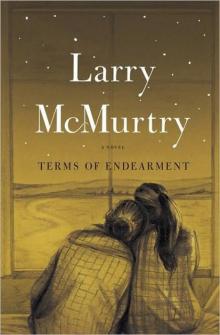 Terms of Endearment
Terms of Endearment Some Can Whistle
Some Can Whistle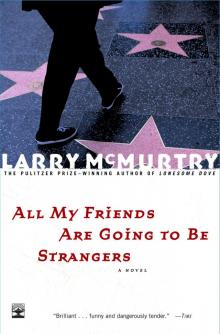 All My Friends Are Going to Be Strangers
All My Friends Are Going to Be Strangers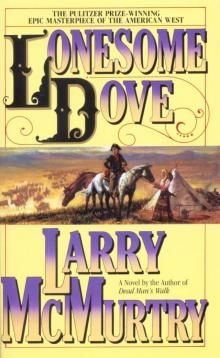 Lonesome Dove
Lonesome Dove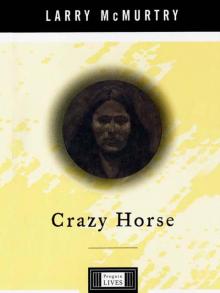 Crazy Horse: A Life
Crazy Horse: A Life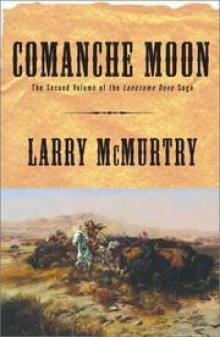 Comanche Moon
Comanche Moon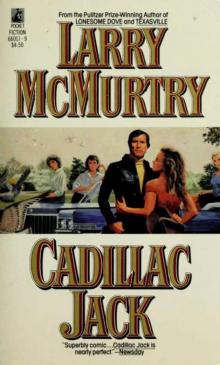 Cadillac Jack
Cadillac Jack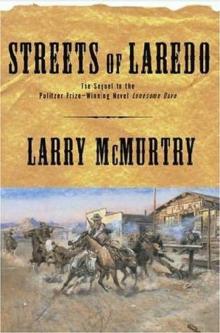 Streets of Laredo
Streets of Laredo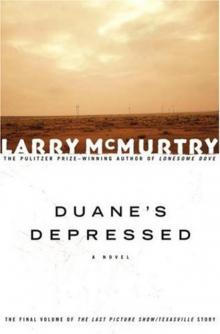 Duane's Depressed
Duane's Depressed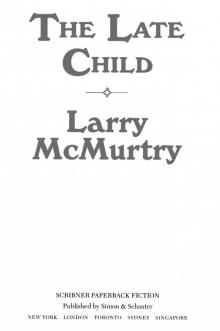 The Late Child
The Late Child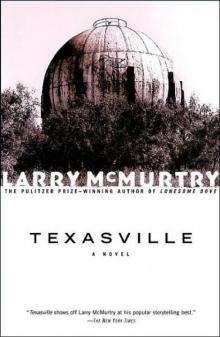 Texasville
Texasville Rhino Ranch
Rhino Ranch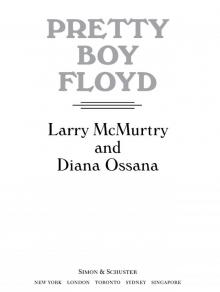 Pretty Boy Floyd
Pretty Boy Floyd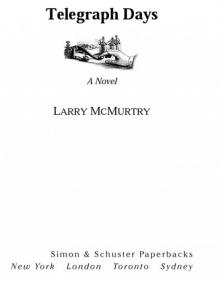 Telegraph Days
Telegraph Days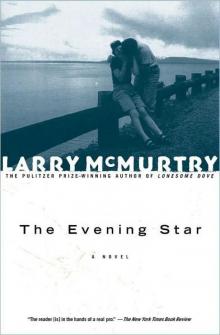 The Evening Star
The Evening Star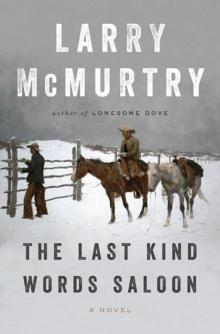 The Last Kind Words Saloon
The Last Kind Words Saloon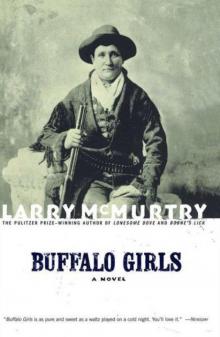 Buffalo Girls
Buffalo Girls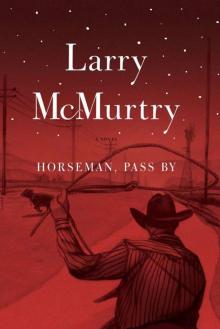 Horseman, Pass By
Horseman, Pass By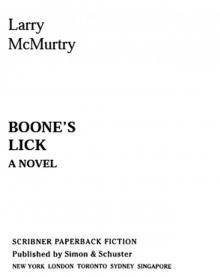 Boone's Lick
Boone's Lick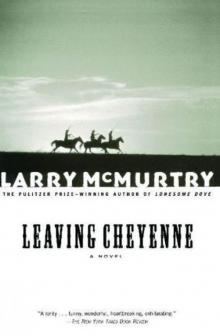 Leaving Cheyenne
Leaving Cheyenne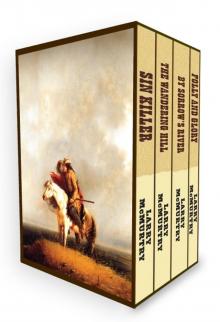 Sin Killer
Sin Killer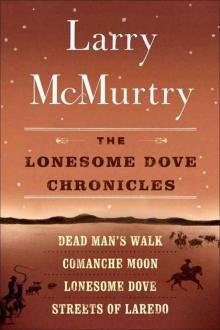 The Lonesome Dove Chronicles (1-4)
The Lonesome Dove Chronicles (1-4)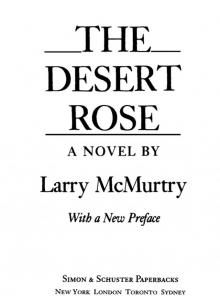 The Desert Rose
The Desert Rose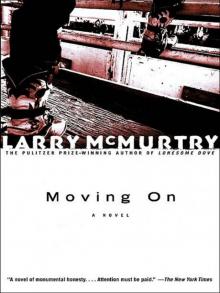 Moving On
Moving On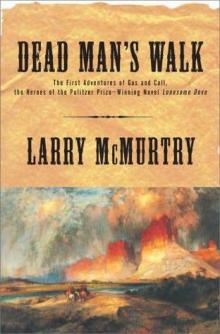 Dead Man's Walk
Dead Man's Walk The Last Picture Show
The Last Picture Show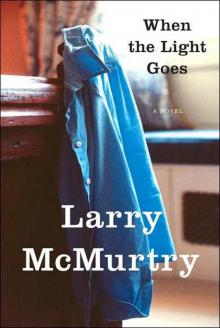 When the Light Goes
When the Light Goes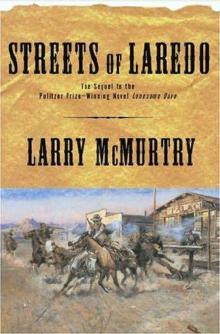 Streets Of Laredo ld-2
Streets Of Laredo ld-2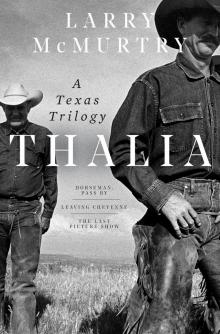 Thalia
Thalia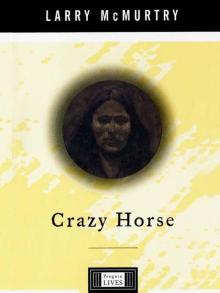 Crazy Horse
Crazy Horse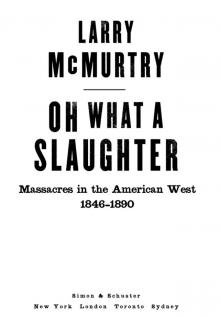 Oh What a Slaughter
Oh What a Slaughter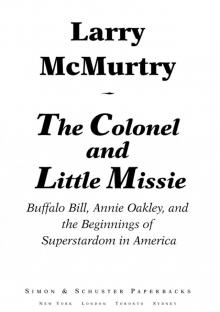 The Colonel and Little Missie
The Colonel and Little Missie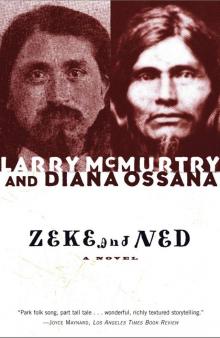 Zeke and Ned
Zeke and Ned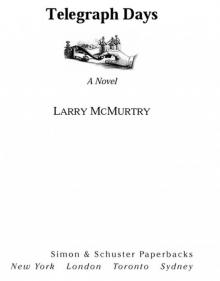 Telegraph Days: A Novel
Telegraph Days: A Novel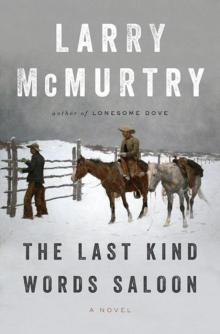 The Last Kind Words Saloon: A Novel
The Last Kind Words Saloon: A Novel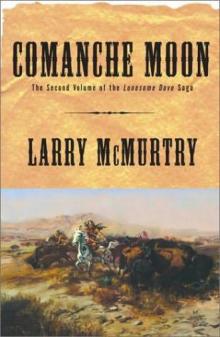 Comanche Moon ld-4
Comanche Moon ld-4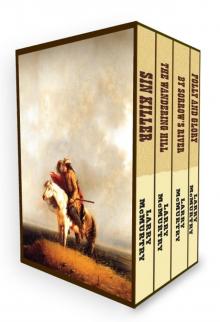 The Berrybender Narratives
The Berrybender Narratives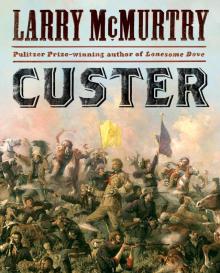 Custer
Custer